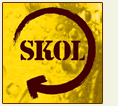 |

From #4 in Brazil to Owning Budweiser
in Record Time
Background
- Brazil is the third largest beer market in the world with more than 100
brands competing for share.
- Most of these brands are undifferentiated. As in the U.S., the category
was taking on the characteristic of a commodity market, where brand
name means little and purchase decisions are based largely on price.
- With a 15% share of the Brazilian beer market, Skol was the #4 player in
the market, trailing far behind power beer brands Brahma and Antarctica,
which together commanded more than 60% of the total category.
Diagnosis
- The Skol brand lacked a clear and differentiating market target and
positioning. The brand was lifeless and boring.
- While Brahma and Antarctica enjoyed 90% distribution through on- and
off-premise channels, Skol only had 50%, mostly through supermarkets
and grocery stores.
- Skol’s distribution was particularly weak in the primary channel for beer
sales—on-premise (a.k.a., bars).
Strategic Research
- Skol undertook a large scale study among 1,300 beer drinkers in 26 large
and small populated cities.
- The study assessed the needs, problems, and motivations of beer
drinkers, as well as their perceptions of different brands. Copernicus
identified the most profitable people and occasion segments, the most
compelling positioning, and an effective and efficient media strategy using
the Copernican Media Optimizer model.
- This was followed by a series of copy tests to select a 3-sigma advertising
campaign to communicate the positioning and stimulate buying behavior.
Strategic Options
- Skol could be phased out of the market, freeing up marketing dollars for
other brands.
- Skol could continue to focus distribution on the supermarket and simply
maintain current market share.
- Skol could make a play for market share by dropping prices.
- Skol could be repositioned as a lighter, smoother beer supported by a
marketing budget worthy of a market leader.
Strategic Choice
- Skol wanted more than to be an “also ran” brand so it decided to build a
strategy based on the dimension key targets indicated was most
motivating and on which Skol could deliver: smooth flavor.
- “It goes down smooth” became the central message of the advertising
and marketing communications campaign.
- Communications expenditures were significantly increased to reflect
brand building objectives.
Strategic Implementation
- Copernicus developed a marketing mix model for the Brazilian beer
market, enabling Skol to test what inputs in the marketing plan (including
strategic elements such as targeting and positioning and tactical elements
such as primetime GRPs) would yield desired outputs (i.e., market share
and brand equity).
- Importantly, the marketing mix model fostered a better understanding
among the sales force of key distribution channels, and helped set
specific and realistic distribution targets for the next 24 months.
- The sales force redirected efforts to include broader distribution to get the
product to the target beer drinkers, with a heavy emphasis on on-premise
sales.
Performance Results
- In just four years, Skol skyrocketed from the #4 position to the #1 position
in its home market. Its market share doubled to 31%.
- Skol’s distribution reached 93%, surpassing Brahma and Antarctica the
leading beers in South America.
- Beer drinkers ranked Skol as superior over the other brands on all key
measures of taste and flavor.
- By 2006, after the “smooth” strategy had been launched internationally,
the brand achieved unprecedented sales. It had become the #3 beer
brand in the world without a single drop sold in North America.
- Carlos Brito,the original brand manager of Skol in Sao Paulo, became
CEO of InBev, the world’s largest brewer, and the owner of the Skol
brand. In July 2008, Carlos successfully acquired Anheuser Busch.
|

|
